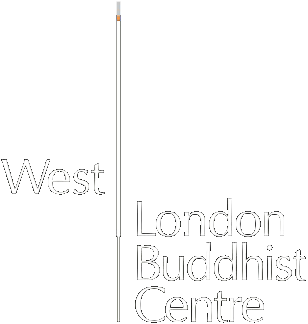The Value of Variety
David, one of our sangha, talks about his meditation practice
Variety enriches human experience and meditation is no exception. We all know the quality and satisfaction of our meditation can vary from session to session. While a regular habit of time and place helps to support meditation a practice which is initially fresh and compelling, performed repeatedly in the same way loses its edge, and there is a danger of boredom and loss of motivation. In a regular meditation group (the ‘Jinananda Group’), we know from our conversations that each of us has a preferred, and sometimes different, practice that resonates.
Some meditators may find it beneficial to intersperse Mindfulness of Breathing (MoB) with Metta Bhavana, or Just Sitting. I find breath meditation is the method that comes most easily and an emphasis on technique helps my focus and gives structure, although to prevent this becoming too rigid, I also include intervals of Just Sitting/Insight Meditation. The Thai Forest Tradition advocates samatha meditation (MoB) performed in parallel with awareness of external stimuli for developing Insight, and sounds are particularly useful for this.
I especially enjoy the nostril-tip awareness as taught by Triratna in Stage 4 MoB. Extending MoB into at least some of the 16 stages of Anapanasati is a natural and pleasing progression which I do during our long Saturday afternoon mediations at the Centre.
My favourite method
Begin by sitting quietly for a minute. (Reciting the Triratna salutation reminds mind and body why they are there.) Close eyes, breath in counting 1, then breath out opening the eyes slightly to look at the Buddha with gratitude, then close eyes breath in counting 2 and breath out, opening the eyes again. Repeat up to 9 and then go back to 1 and start again. Within a couple of repetitions you won’t wish to open your eyes and will begin to feel immersed.
Posture is important: I try to sit lightly on the cushion imagining myself suspended by a thread from the top of my head, hanging loosely, arms dangling, relaxed. Doing a few gentle neck rolls and grimacing helps relax the muscles in the face and neck.
The Burmese Theravada school suggest as follows. Direct your attention to the point where you feel the air almost imperceptibly making contact at the upper lip below the nostrils. Focus your attention on the subtle sensations made by the air at that point. (It can be good to do this near an open window when the air you breath in may be slightly cooler and so easier to feel.)
Now, as you breath in (mentally) say IN. And as you breath out say OUT.
The Buddha said to breathe in and out experiencing the whole body, by which the Burmese Mahasi Sayaadaw says he meant the whole body of breath. (ie the entire breath passing the contactless point of observation.) So one becomes aware of the beginning, middle, and end of each inbreath and each outbreath as it passes the upper lip.
Things to try
- Thich Nhat Hanh recommended smiling on the outbreath. Try it. As you breath out – SMILE! Do three times and repeat in groups of three. You may feel a sensation like warm sunshine on your face which is blissful. If you don’t, try imagining it and the sensation should come. (We smile when we are happy and there is some evidence that it works the other way that the smile mechanism increases dopamine levels.)
- Analayo suggests mentally intoning “Reeeeelax” on the inbreath and a slow “Letting go” on the outbreath – while relaxing your fingers and letting your hands loosen. Repeat in groups of three.
- An Anapanasati follow-on from sensations of pleasure and joy is Gladdening the Mind by indulging in the sensation of Spaciousness on the out-breath, and later Centring the Mind with One-Pointed concentration, again on the out-breath.
Incorporating different elements into a session keeps things fresh and appealing. I meditate in the morning and a good session fills me with joy. A joy I can carry with me throughout the rest of my day. A pillar of support.
David Molana-Allen
Interested in joining the Jinananda Group for their twice monthly afternoon meditation sessions at the centre?
Email here.

